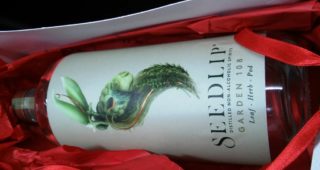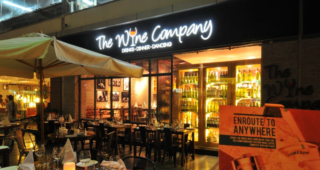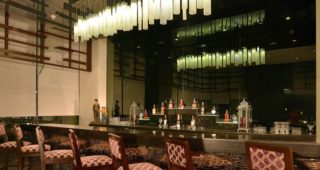If you doubt the veracity of the refrain “there’s more to Thai food than coloured curries and typical spices” then Neung Roi is the place to go and check it out yourself. This Thai specialty restaurant at Radisson Plaza Mahipalpur (Delhi) really does well in convincing you that the refrain is true in letter and spirit.
Neung Roi, literally meaning ‘one hundred’, has a significant connection with Thailand’s geography, as the 100° E longitudinal line passes through the country. Objectively though, it means that the restaurant is 100% authentic Thai with cuisine mapping all the four regions of Thailand, offering guests some mind-boggling choices. For this reason the restaurant has its menu on iPad apart from the regular Carte option , with an easy-to-operate app that makes dish selection a cinch.

TRANQUIL SPACE
The restaurant is tucked in a tranquil space of the hotel at the ground floor with a tastefully done up buffer area that further isolates it from the main corridor.So, it’s really calm. The colour scheme is soothing with a cosy arrangement of sofas as well as chairs, which enhances the calm. The restaurant also has a private dining room which can accommodate up to 12 persons and can be booked in advance.
FOUR DISTINCT CUISINES
The whole premise of the restaurant is in its Thai demeanour. So don’t expect a mix of cuisine here. To zoom into the grain level, the menu has been crafted to represent four distinct cuisine regions of Thailand with each having its USP as under:
Isan: Simple food with bold and spicy flavours.
Lanna: Hot and salt-influenced cuisine devoid of staple Thai ingredients like fish sauce, shrimp paste or coconuts. Isthmus of Kra (Southern Thailand): Influenced by culinary styles of neighbouring Myanmar and Malaysia asalso coastal India. The cuisine is spicy with abundant use of coconut cream, turmeric, sour fruits and salted relishes that render a perfect balance to the dishes.
Central Thailand: A broader range of flavours with hot and salty character. The abundant use of varied seasonings in this region leads to multiple flavours, textures and tastes in a single dish. Talking about their approach to food, Yenjai Suthiwaja, the chef at the restaurant who comes from Phuket, says, “Fresh raw materials – whether vegetables, fruits, meat, seafood or seasonings – play a major role in producing authentic and flavourful Thai food, hence we do not compromise on these.” She feels the Indian food lovers are favourably inclined towards spicy food and Thai food scores a plus here.
My food experience started with a unique and palate refreshing amuse bouche of sweet and tangy elements served on a betel leaf that set the Oriental tone right away. This was followed by the chef recommended Entrée course comprising Gai Yang (grilled chicken with coriander roots and roasted chilli sauce), Tod Man Khao Pod (corn fritter with sweet chilli sauce) and Yam Som-O (Pomelo salad with crispy onion, garlic and palm sugar tamarind dressing).

The boneless tranches of grilled chicken had a divine crust before reaching the juiciness inside, with roasted chilli sauce adding a rustic dimension. The corn fritters were amazingly airy and ‘melted in the mouth’. The Pomelo salad was tangy and nutty that made for a good accompaniment to the earlier two. Though drinks pairing was not on agenda (given my busy schedule post-lunch), I ordered a Fino Sherry with this course, as I could imagine the enhanced freshness it would bring to the flavourful course.

Next was the Soup course, as Tom Kha Goong (prawn and coconut milk broth with mushroom, coriander, kaffir lime and galangal) was intensely aromatic, creamy and embalming on the palate, but a tad sweeter. A swig or two of the Fino Sherry saved by me to try with the soup did wonders.

For the Main course, Pla Neung Manao (steamed fish with lime chilli sauce) was decadent and gentle on the palate. Panaeng Gai (chicken in peanut base sauce) was intense but I would have preferred it a little more juicy. Maybe the contrast with the fish made it appear drier.


Phad Pak Banjarong (asparagus, snowpeas, mushroom, babycorn and cauliflower with garlic, soya sauce and pepper) and Khao Suay (Jasmine rice) completed the legume and carb elements to make it a well rounded course. For wine, I chose Mas Rabell, a white wine from Torres having 100% Parellada grapes – a famous and elegant varietal from the Catalunya region in Spain. The delicate fruit flavours and herbal undertones of the wine provided excellent company to this course.
The lunch experience would have been incomplete without sampling the unique Thai desserts, so I sampled Tub Tim Krob (water chestnut in coconut jasmine syrup). The chestnuts were chewy, somewhat like gummy bear, and carried the jasmine flavoured coconut milk well. Fugtong Chum (sweetened pumpkin with coconut milk) was interesting, but it was too sweet for me.

It was the banana ice cream that really stole the show as it oozed freshness both on the nose and the palate. Ritul Yadav, Communications Director at the hotel, informed that they regularly make customized ice creams in-house with different flavours, so as to give a unique experience to the guests every time.
Apart from its Thai USP, the restaurant has reasonable prices that offer good value for money. All dishes on the menu are priced between ₹ 300 and ₹ 900 (plus taxes) which makes it very competent in its segment. Also, being in close proximity to the Delhi airport it is a boon for those travellers who may want to have an impromptu rendezvous around some delightfully authentic Thai food.
Upside
- Great food.
- Serene ambience.
- Pleasing service.
- Reasonable prices
Downside
- None
Average price per person (food only):₹ 1500 (all inclusive)
Timings: 12 noon to 3 pm, 7 pm to 11:45 pm
Radisson Blu Plaza Delhi, National
Highway 8, Near IGI Airport, Mahipalpur, New Delhi









